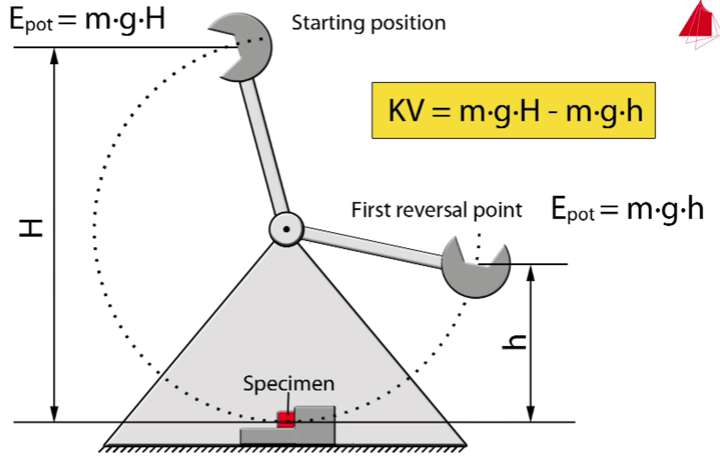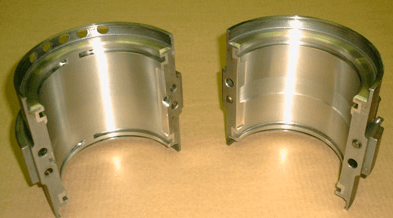Effect of Forging on Steel Density
The writer has been unable to find much information relative to tests made to determine the effect of forging on the specific density of steel. The opinion, however, among men engaged in the business, seems to be that forging greatly compresses or consolidates the steel. While such is doubtless the case with spongy or porous […]
Charpy Impact Machine

Using a Charpy Impact Machine, we have done considerable work on notch-bar testing and are farther at sea now than when we started. So far, we have been unable to get the notch-bar test to be consistent with any other known test. Lately, I have been investigating the effect of the position of the notch-bar […]
Babbitt Bearings

Brinell Hardness of Babbitt Bearings at Increasing Temperatures Brinell tests at progressively increasing temperatures are given for a representative lead-base and a representative tin-base Babbitt Bearings, showing that the former has superior resistance to deformation at the working temperatures of bearings. Small squares of bearing bronze, tinned and then babbitted with a representative lead-base babbitt […]
Zinc Vapor Condensation
The study of the condensation of zinc from its vapor was undertaken to shed light on certain problems encountered in large-scale electric zinc-furnace work recently conducted. It is a matter of common knowledge that one of the disadvantages of the arc type, electric zinc furnace, is the production of a large amount of blue powder […]
Zinc Dust in Precipitant in Cyanidiation
In the cyanide process, gold and silver are dissolved from crushed ore as double alkali-metal cyanides, from which they may be precipitated by such positive metals as sodium (amalgam), aluminum, or zinc, or by electrolysis. Two extreme conditions may be noted. Some works, especially slime plants practising decantation, use a relatively large volume of solution—possibly […]
Screen Scale for Testing Sieves
Since the adoption by the U. S. Bureau of Standards several years ago of specifications for standard 100- and 200-mesh sieves, frequent requests have been received that this Bureau test and certify sieves of other sizes than these. With a view to the adoption of a series of standard testing sieves which might be of […]
How to Separate Liquid from Solids
For some years past the principle enunciated in the discussion referred to has been known to the writer and demonstrated by him to be an efficient and economical way of separating water or solution from solids in the cyanidation, lixiviation or acid leaching of ore pulps. In utilizing this principle in commercial practice he has […]
Desilverization of Lead – Pattinson Process
When Hugh Lee Pattinson discovered, in 1829, that the crystals formed during the slow cooling of molten lead were poorer, and the remaining liquid richer in silver, than the original lead, an important step was made in the metallurgy of this metal. Being the first process applicable to the desilverization of low-grade lead bullion, it […]
Melting Copper Cathodes
The melting of cathode copper, usually containing 99.98+ per cent. Cu, would appear to be a simple matter. Owing to the well known affinity of copper for sulphur, however, so much sulphur is absorbed by the copper during the operation that a long and expensive refining process is required to remove it, and the final […]
Mineral Vein Formation Mechanism
A vein may be defined as an aggregation of mineral matter, more or less tabular or lenticular in form, which was deposited from solution and is of later origin than the inclosing rock. This definition differs from the one found in many textbooks in that no assumption is made as to the origin of the space […]
